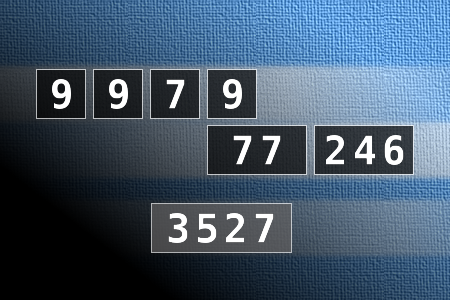Calculate the number 3527
NUMBERMANIA: Calculate the number 3527 using numbers [9, 9, 7, 9, 77, 246] and basic arithmetic operations (+, -, *, /). Each of the numbers can be used only once.Correct answers: 1
#brainteasers #math #numbermania

A vampire bat came flapping in...
A vampire bat came flapping in from the night covered in fresh blood and parked himself on the roof of the cave to get some sleep.
Pretty soon all the other bats smelled the blood and began hassling him about where he got it.
He told them to go away and let him get some sleep but they persisted until finally he gave in.
"OK, follow me" he said and flew out of the cave with hundreds of bats behind him.
Down through the valley they went, across a river and into a forest full of trees.
Finally he slowed down and all the other bats excitedly milled around him.
"Now, do you see that tree over there?" he asked.
"Yes, Yes, Yes!" the bats all screamed in a frenzy.
"Good" said the bat, "Because I sure didn't!"
Pretty soon all the other bats smelled the blood and began hassling him about where he got it.
He told them to go away and let him get some sleep but they persisted until finally he gave in.
"OK, follow me" he said and flew out of the cave with hundreds of bats behind him.
Down through the valley they went, across a river and into a forest full of trees.
Finally he slowed down and all the other bats excitedly milled around him.
"Now, do you see that tree over there?" he asked.
"Yes, Yes, Yes!" the bats all screamed in a frenzy.
"Good" said the bat, "Because I sure didn't!"

